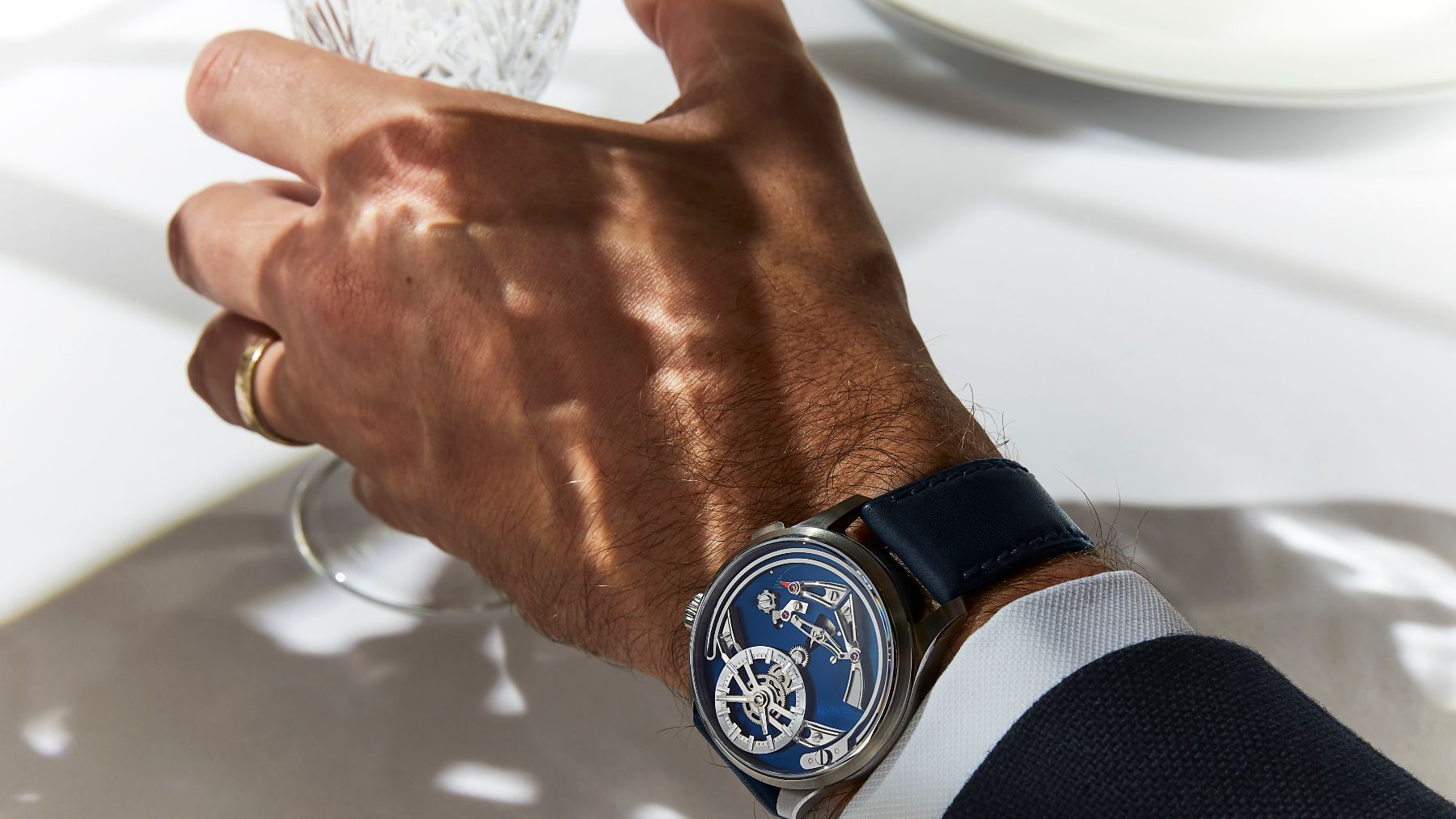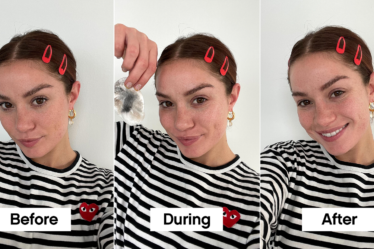
One of 2022′s most talked about watches wasn’t the product of a decades-old Swiss giant like Rolex or Patek Phillippe, but a company founded in this century.
In November of last year, 18-year-old British watchmaker Christopher Ward launched its line of C1 Bel Canto automatic watches. The sonnerie — French for making sound — watches, which chime on the top of the hour, were priced at $3,795 to start. That cost was well above the average price for brand’s timepieces, around $1,200, but much less than a sonnerie watch at a legacy brand — Patek Philippe’s petite sonnerie watch will run you north of $1 million.
The initial release of the Bel Canto sold out in hours and is now a mainstay in Christopher Ward’s product offering. It’s sparked a period of growth for the company, which is on pace to double its revenue to around £40 million ($49 million) in 2023.
Christopher Ward is just one of several digitally-native watch sellers that are moving upmarket.
These so-called “micro” brands, which also include six-year-old Paris-based Baltic, along with AnOrdain, Brew, Furlan Marri and others, usually sell direct-to-consumer, bypassing authorised dealers that can be harder to enter than luxury department stores. Their watches are priced between $500 and $1,500, and have fewer purchase barriers, such as the long waiting list Swiss megabrands are known for. With that, they’ve been able to carve out a market in e-commerce — where watch sales, though growing, remain underpenetrated. They attract both watch collectors who find the luxury market out of reach because of price or access, as well as those who can afford premium timepieces but recognise the value in the more affordable brands.
“The rise of these [micro brands] have democratised the industry,” said Adam Craniotes, co-founder and president of RedBar Group, a global association of watch collectors. “People who have Rolexes, Audemars Piguet, Patek Philippe, still want these other brands.”
Now, these brands are adding more advanced complications — features in a watch that go beyond telling time to their product — and moving production in-house. The success of micro brands is all the more remarkable in a luxury watch market that has seen its volumes decline for years. While luxury watchmaking has seen its revenues recover in recent years, success stories have mostly been concentrated among the strongest and most expensive players. But micro brands are poised to take a bigger slice of the more than $100 billion global watch market as the next generation of watch enthusiasts look for more choices when buying well-made watches, industry experts say.
“The people that buy high-end watches, they’ve been part of our world for a long time,” said Blake Buettner, managing editor at online watch publication Worn & Wound. “What you’re starting to see [is micro brands] bringing a greater portion of that market into this space because of the interesting things they’re doing.”
Complicating the Process
Baltic officially entered the luxury conversation in 2021 when it sold a 1940s-inspired mechanical watch that lets wearers detect their heartbeat for $55,000 at the bi-annual OnlyWatch charity auction, where the world’s most famous watch brands sell exclusive pieces.
But it takes more than a one-off piece to move upmarket. Baltic, whose vintage-inspired automatic watches typically cost around €700, is creating a higher-end line, Baltic Experiments. Those watches will feature a perpetual calendar — an advanced feature that displays days and months — and will retail for as high as €25,000 ($26,300). Baltic partnered with Swiss watch manufacturer Maclef to develop and produce the calendar, which is among the most sophisticated types of complications.
The first will be available at the forthcoming OnlyWatch auction in 2024, and the Baltic Experiments line — about 30 pieces — will get a wider commercial release as early as 2024.
While the brand won’t abandon or stop developing watches at more accessible price points, the premium line offers Baltic a chance to innovate and entice the most advanced of watch collectors.
“It’s a more complex process, more expensive process and a more ambitious process,” said Etienne Malec, Baltic’s founder and chief executive. “It’s a new start for us.”
Other brands have made permanent changes to their supply chain to create higher-end products. Back in 2014, Christopher Ward merged with Swiss watchmaker Synergies Horlogères to bring the process of developing movements — the engine that powers the watch — in-house. Having those capabilities allowed it to eventually produce pieces like the C1 Bel Canto line.
“We have increasingly been developing our own calibres [another name for movements],” said Mike France, co-founder and chief executive at Christopher Ward. “We wanted that sort of horological expertise in our business, something that we could own, that allowed us to go in directions that others wouldn’t go in.”
In addition to making higher-priced watches, Christopher Ward’s overall productivity has increased. This year, the company will make more than 30,000 watches, up from 20,000 in 2022. That volume increase will help the brand reach £125 million in annual sales in the next four years, with nearly 20 percent profit margins, France said.
The DTC Advantage
In their aim to increase visibility with high-spending watch enthusiasts, digitally-native micro brands have several factors working in their favour.
For starters, a growing number of customers are buying watches online. E-commerce will account for around 30 percent of DTC watch sales by 2025, according to estimates by McKinsey. But luxury brands like Rolex, Audemars Piguet and Patek Phillippe still generate most of their sales through their own physical stores and retail partners.
With a smaller customer base and a DTC sales model, micro brands can also communicate with their customers more directly — an attractive proposition for watch enthusiasts who want to converse with their sellers.
At Christopher Ward, six months after its 2005 launch, a client in The Netherlands set up an independently-run forum dedicated to the brand. That digital community now has more than 15,000 users who regularly praise (and criticise) Christopher Ward’s products.
“We read it all the time. It’s a constant source of information and it keeps us honest,” said Mike France, Christopher Ward’s co-founder and chief executive. “It also helps us develop new watches because these guys spend months of the year talking and discussing Christopher Ward watches.”
Newer micro brands have even tapped the watch community for seed funding: Baltic launched in 2017 after a successful Kickstarter campaign, where they raised €500,000, against a €65,000 goal. Malec already had a presence in the watch community, posting on popular forums and attending local collectors’ meetings, which led to a built-in audience when he announced the campaign on his social media.
The company continues to keep an open line with its customers. Each year, the founder Etienne Malec travels to at least four watch shows in the US, where more the 40 percent of the brand’s annual sales come from, to meet avid fans in-person, along with hosting small parties for collectors in London, Hong Kong and New York. Baltic is expecting to generate around €10 million in sales ($11 million), up from nearly €4 million In 2021.
By contrast, legacy watch brands tend to have a carefully-crafted, heritage-driven image to maintain, which often creates a barrier between them and their customers. But the big companies are beginning to take note of the benefit of these strategies.
“Larger brands are looking back and seeing how they can access this enthusiast audience,” said Zach Weiss, co-founder and executive editor at Worn & Wound. Legacy brands, he added, have approached the editors of the site “asking why aren’t your readers as interested in our brand as a smaller brand.”



